|
 |
 Автор: Williams Автор: Williams
 Дата: 20 октября 2020 Дата: 20 октября 2020
 Просмотров: 1 402 Просмотров: 1 402 |
| |
Ivan Vanicek, Daniel Jirasko, Martin Vanicek - Modern Earth Structures for Transport Engineering
Engineering and Sustainability Aspects
CRC, 2020
pdf, 185 pages, english
ISBN: 978-0-429-26366-8
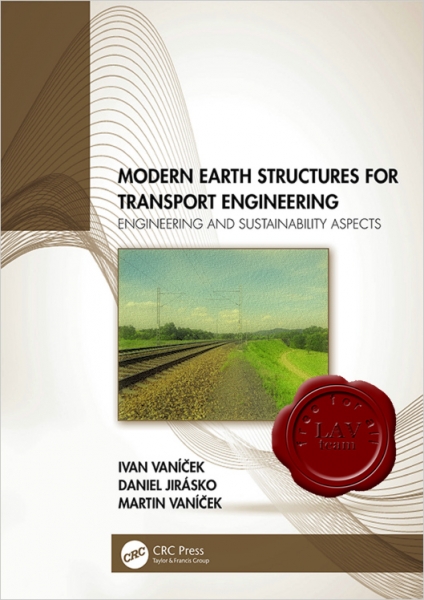
Earth structures together with foundation structures and underground structures fall under the more general subject matter of geotechnical structures. Under the term geotechnical structures earth structures are the oldest matter of concern, but rather paradoxically in comparison to foundation structures (foundation engineering) and to underground structures (tunnelling), the first monograph covering all aspects of earth structures was written only one decade ago (Vaníček and Vaníček, 2008). Briefly stated, we can use the following categorical explication for the division of geotechnical structures:
- Construction with ground for earth structures, where ground (soil) is the natural and most used construction material;
- Construction on the ground for foundation structures;
- Construction in the ground for underground structures.
This book will deal only with earth structures for transport engineering, although it is recognized that earth structures for water or environmental engineering also generate other interesting concerns. Embankments and cuts of motorways and railways comprise the main subject of the presented material. However, the main recommendations are valid also for airfields and parking areas.
Development in each profession is progressing in the form of individual steps, wherein a hierarchical part relates to new knowledge or to pressure from society to improve something, and a lateral part is more connected with the implementation of this knowledge into general practice. For earth structures, development was very slow up to the beginning of the 20th century, when design was mostly based on previous experience. The first significant advance is usually connected with the principle of effective stresses and the theory of consolidation (Terzaghi, 1925, 1943). Other advances were made in the 1950s to 1970s with new testing devices Bishop and Henkel (1957, 1962), the principle of stress path (Lambe and Whitman, 1969), and the implementation of numerical methods for the design of structures (Zienkiewicz, 1967).
Present-day demands on earth structures in transport engineering are strongly influenced by two aspects.
The technical engineering aspect involves structure safety, along with optimal design and implementation. From this perspective, all new knowledge should be applied. Nevertheless, the basic approach to safety and optimal design is strongly affected by geotechnical risk, to which this design and structure implementation is connected. However, to guarantee a certain level of safety for a certain structure, some standards should be accepted. For example, in Europe these standards are included in Eurocode 7 (EC 7) Geotechnical Design (EN 1997).
The second aspect is strongly connected with acceptance of the principle of sustainable development, which was specified at the highest level during the international "Environmental Summit” in Rio de Janeiro in 1992. Gro Harlem Brundtland, the Norwegian prime minister, used for example the following definition of sustainable development: "Development which responds to the needs of the present without compromising the capacity of future generations to respond to their needs.” However, the sustainability approach strongly relates to two other principles, which are nowadays specified for earth structures in transport engineering – the principles of availability and affordability.
Both aspects form the essence of this book, and therefore the term "modern” can be used for this stage of development. The authors recognize with great appreciation support from the Czech Technical University in Prague where the research project CESTI (the Centre for Effective and Sustainable Transport Infrastructure) is being carried out. |
| |
 Читать статью дальше (комментариев - 7)
Читать статью дальше (комментариев - 7)
| |
|
 |
 Автор: Williams Автор: Williams
 Дата: 15 сентября 2020 Дата: 15 сентября 2020
 Просмотров: 2 360 Просмотров: 2 360 |
| |
Alain Dassargues - Hydrogeology: Groundwater Science and Engineering
CRC, 2019
pdf, 493 pages, english
ISBN-13: 978-1-4987-4400-3
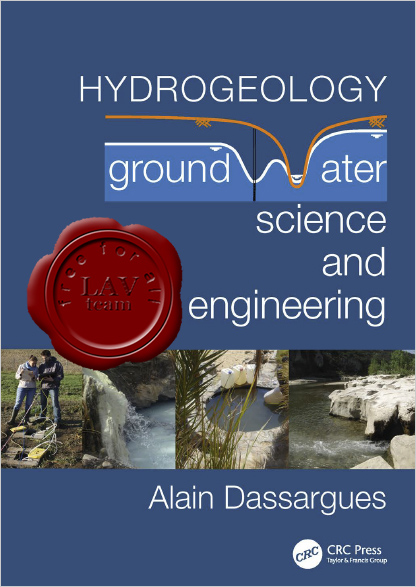
One might wonder whether we need yet another hydrogeology textbook. Before we express our opinion on this, let us evaluate what this new book has to offer. Written for an undergraduate and graduate audience, it brings together both the science and the engineering of hydrogeology. The author draws on his more than 30 years of experience as a scientist and engineer, but especially as a lecturer in courses on hydrogeology and groundwater modeling. As a professor in hydrogeology and environmental geology at the University of Liège in Belgium and part-time professor at KU Leuven (1995–2012), his extensive teaching experience has clearly shaped this highly accessible text. The book covers a wide range of topics, from the basics of groundwater occurrence and flow (Chapters 1–4 and 9) to conductivity measurements (Chapter 5), land subsidence (Chapter 6), chemistry and contaminant transport (Chapters 7–10), heat transfer (Chapter 11), and modeling (Chapters 12 and 13).
The preamble to Chapter 1 sets out the philosophy of the author for the science and engineering of groundwater, which has to serve modern approaches such as, for example, the water-energy-food nexus for managing our water resources. Definitions are provided for hydrogeology and groundwater. For the latter, a contemporary definition of "water underground in pore spaces and fractures” is used. This deviates from the classical definition of "subsurface water beneath the water table,” which was already recognized as a limitation by Freeze and Cherry (1979), since the "study of groundwater must rest on an understanding of the subsurface water regime in a broader sense.” Chapter 2 presents a comprehensive overview of the hydrological cycle, including sections on evapotranspiration, recharge, and baseflow estimation methods. Chapter 3 elaborates the basic terminology of the science of groundwater and its occurrence in different geological environments. Next, Chapter 4 details the main laws and concepts of saturated groundwater flow. The book follows a mathematical and quantitative presentation approach, which is evident in this chapter from the very clear step-by-step derivation of the groundwater flow equations for steady and transient state in two and three dimensions for confined and unconfined conditions. Remarkable is the absence of the typical discussion in hydrogeology textbooks of Tothian groundwater flow systems. Instead, a strong warning is issued that the analytical approaches to calculate flownets "are of limited interest and can even be misleading” because the water table is often prescribed and isotropic-homogeneous conditions are assumed (see also Bresciani et al. 2016). Chapter 5, "Hydraulic Conductivity Measurements,” is one of the chapters that stands out in this textbook. With 47 pages, this chapter provides an excellent overview of the typical laboratory, slug, and pumping tests. However, it also contains a section on less well-known methods, including the use of air permeameter measurements on outcrops or coring material. Chapter 6 is a succinct and interesting summary of the coupling of geomechanics and groundwater flow, describing the physical relationships between land subsidence and pumping. It also illustrates this appropriately through five case studies of sinking cities. Chapter 7 is a solid "Introduction to Groundwater Quality and Hydrochemistry,” as its title suggests. In addition, it also discusses groundwater quality standards and sampling and monitoring strategies. Chapter 8 is the second highlight of this book. With 88 pages and 228 references, it is an outstanding primer on contaminant transport. It presents and discusses the physical and chemical processes affecting solutes in groundwater, while solute transport equations are rigorously developed. Other sections expand on non-aqueous phase liquid (NAPL) transport, remediation, tracer tests, transport and residence times, the use of isotopes and environmental tracers, and, finally, vulnerability and protection of groundwater. Chapter 9 concisely discusses flow and transport processes in partially saturated media. The corresponding equations are explained in detail. Similarly, Chapter 10 on "Salinization and Density Dependent Groundwater Flow and Transport” also includes the formulation of the respective equations. Chapter 11 on "Heat Transfer in Aquifers and Shallow Geothermy” is a welcome extension of the standard hydrogeological topics generally presented in groundwater textbooks. The use of heat data, as available from new sensors, is strongly increasing in hydrogeology, such as in groundwater–surface water interaction studies and tracer tests. Heat-based methods should be a standard topic in current hydrogeology teaching and therefore in any hydrogeology textbook. Interestingly, the discussion on the use of heat for flux estimation is extended with a description of the characteristics of different shallow thermal energy storage systems. The importance is stressed by the author in stating: "More generally, the transition toward renewable energy and power supplies necessitates increasingly more projects involving the underground storage of gas (methane, hydrogen, compressed air, and CO2), water and heat. Hydrogeologists are key actors in these projects.” With its total of 114 pages and almost 300 references, the last two chapters (12 and 13) are the final highlight of this book. Those chapters clearly elevate this textbook. On the one side, they are beneficial for an introductory hydrogeology course, and on the other side they are also highly relevant for an advanced groundwater modeling course. Likewise, they will serve the professional with a reference guide on the different methods for groundwater flow and transport modeling. Chapter 12 discusses the purpose of modeling, conceptual model building, initial and boundary conditions, model design and data, calibration, validation, sensitivity analysis, and inverse modeling. Moreover, advanced topics of geostatistical modeling and probability, including multiple-point geostatistics and Bayesian learning, are outlined. In the last chapter, the author discusses the mathematical basis of different numerical techniques for modeling groundwater flow and transport. In addition to the standard finite-difference (MODFLOW) technique, he also explains the finite-element and finite-volume methods and the whole gamut of numerical methods for solute transport.
In a field in which researchers are becoming increasingly specialized, it is a rare feat to have a single-author text covering such a wide range of topics. The style of writing is therefore consistent throughout the book, which is especially apparent in the focus on quantification and the mathematical rigor. This makes the book relevant, not only to its intended audience of undergraduate and graduate students, but also to postgraduates and researchers from other disciplines as a broad introduction to the field of hydrogeology. Finally, its highly up-to-date literature provides us with a reference for years to come.
While the book is comprehensive, it is not complete. The author has made clear choices: groundwater biology, groundwater-dependent ecosystems, groundwater–surface water interaction, hydrogeophysics, and management hardly feature in this book. As an educational tool, its structured style and clear black-and-white figures make it very attractive. On the other hand, it lacks review questions and calculation examples. The book is available in hardback and e-book, and a version in French will be published soon.
To conclude, we return to the initial question: every new textbook on hydrogeology is a further marker of the development of the science and practice of hydrogeology. Although no single textbook can ever be complete, the diversity of texts makes the field of hydrogeology rich. These textbooks capture the expertise of decades of research and teaching. Therefore, they not only become a giant’s shoulder to stand on for a new generation of hydrogeologists, but above all they are a celebration of the steady progress in hydrogeological science. |
| |
 Читать статью дальше (комментариев - 11)
Читать статью дальше (комментариев - 11)
| |
|
 |
 Автор: Williams Автор: Williams
 Дата: 31 августа 2020 Дата: 31 августа 2020
 Просмотров: 1 663 Просмотров: 1 663 |
| |
Dongzhou Huang,Bo Hu - Concrete Segmental Bridges
Theory, Design, and Construction to AASHTO LRFD Specifcations
CRC, 2020
pdf, 1028 pages, english
ISBN: 978-1-4987-9900-3
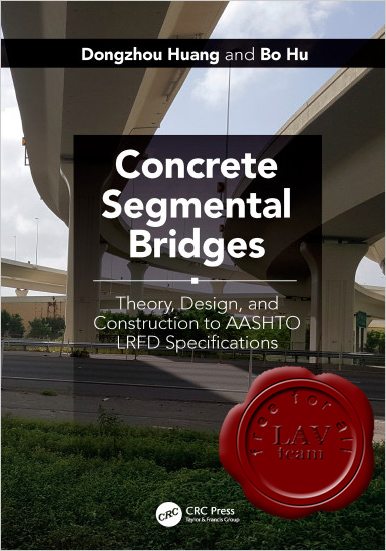
Segmental concrete bridges have become one of the main options for major transportation projects world-wide. They offer expedited construction with minimal traffic disruption, lower life cycle costs, appealing aesthetics and adaptability to a curved roadway alignment. The literature is focused on construction, so this fills the need for a design-oriented book for less experienced bridge engineers and for senior university students.
It presents comprehensive theory, design and key construction methods, with a simple design example based on the AASHTO LRFD Design Specifications for each of the main bridge types. It outlines design techniques and relationships between analytical methods, specifications, theory, design, construction and practice. It combines mathematics and engineering mechanics with the authors’ design and teaching experience. |
| |
 Читать статью дальше (комментариев - 11)
Читать статью дальше (комментариев - 11)
| |
|
 |
 Автор: Williams Автор: Williams
 Дата: 16 июля 2020 Дата: 16 июля 2020
 Просмотров: 2 125 Просмотров: 2 125 |
| |
Paul Kurowski - Engineering Analysis with Solidworks Simulation 2018
CRC, 2018
pdf, 597 pages, english
ISBN-13: 978-1-63057-153-5
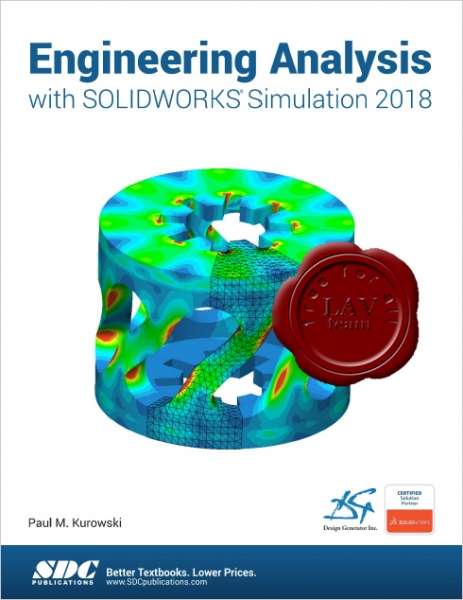
Engineering Analysis with SOLIDWORKS Simulation 2018 goes beyond the standard software manual. Its unique approach concurrently introduces you to the SOLIDWORKS Simulation 2018 software and the fundamentals of Finite Element Analysis (FEA) through hands-on exercises. A number of projects are presented using commonly used parts to illustrate the analysis features of SOLIDWORKS Simulation. Each chapter is designed to build on the skills, experiences and understanding gained from the previous chapters. |
| |
 Читать статью дальше (комментариев - 5)
Читать статью дальше (комментариев - 5)
| |
|
 |
 Автор: Williams Автор: Williams
 Дата: 17 июня 2020 Дата: 17 июня 2020
 Просмотров: 1 473 Просмотров: 1 473 |
| |
T. Agami Reddy, Jan F. Kreider, Peter S. Curtiss, Ari Rab - Heating and Cooling of Buildings
Principles and Practice of Energy Efficient Design, Third Edition
CRC Press, 2017
pdf, 898 pages, english
ISBN: 978-1-4398-9989-2
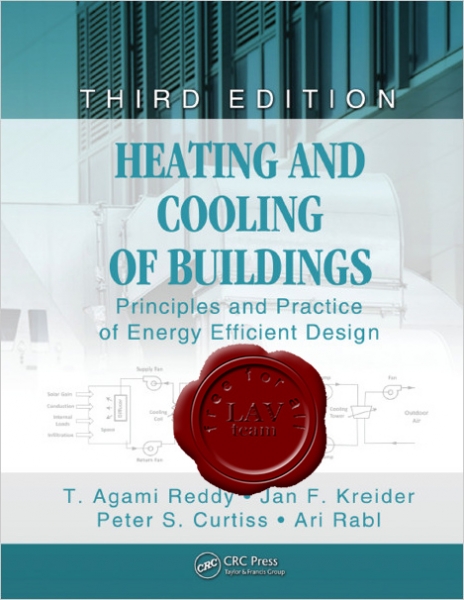
Heating and Cooling of Buildings: Principles and Practice of Energy Efficient Design, Third Edition is structured to provide a rigorous and comprehensive technical foundation and coverage to all the various elements inherent in the design of energy efficient and green buildings. Along with numerous new and revised examples, design case studies, and homework problems, the third edition includes the HCB software along with its extensive website material, which contains a wealth of data to support design analysis and planning. Based around current codes and standards, the Third Edition explores the latest technologies that are central to design and operation of today’s buildings. It serves as an up-to-date technical resource for future designers, practitioners, and researchers wishing to acquire a firm scientific foundation for improving the design and performance of buildings and the comfort of their occupants. For engineering and architecture students in undergraduate/graduate classes, this comprehensive textbook. |
| |
 Читать статью дальше (комментариев - 9)
Читать статью дальше (комментариев - 9)
| |
|
 |
 Автор: Williams Автор: Williams
 Дата: 14 апреля 2020 Дата: 14 апреля 2020
 Просмотров: 1 793 Просмотров: 1 793 |
| |
Paul Chess, Warren Green - Durability of Reinforced Concrete Structures
CRC Press, 2020
pdf, 149 pages, english
ISBN-13: 978-0-367-27838-0
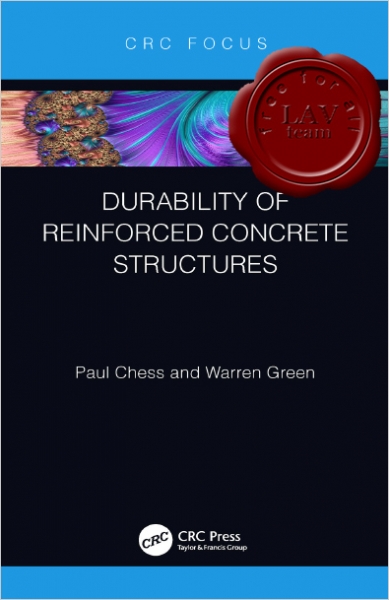
Reinforced concrete structures corrode as they age, with significant financial implications, but it is not immediately clear why some are more durable than others. This book looks at the mechanisms for corrosion and how corrosion engineering can be used for these problems to be minimized in future projects. Several different examples of reinforced concrete structures with corrosion problems are described and the various life enhancement solutions considered and applied are discussed. The book includes a chapter on the effectiveness of corrosion monitoring techniques and questions why the reality is at odds with current theory and standards.
Specialist contractors, consultants and owners of corrosion damaged structures will find this an extremely useful resource. It will also be a valuable reference for students at postgraduate level. |
| |
 Читать статью дальше (комментариев - 12)
Читать статью дальше (комментариев - 12)
| |
|
 |
 Автор: Williams Автор: Williams
 Дата: 11 апреля 2020 Дата: 11 апреля 2020
 Просмотров: 3 083 Просмотров: 3 083 |
| |
Ram S. Gupta - Principles of Structural Design. Wood, Steel, and Concrete. Third Edition
CRC Press, 2020
pdf, 619 pages, english
ISBN-13: 978-1-138-49353-7

Timber, steel, and concrete are common engineering materials used in structural design. Material choice depends upon the type of structure, availability of material, and the preference of the designer. The design practices the code requirements of each material are very different. In this updated edition, the elemental designs of individual components of each material are presented, together with theory of structures essential for the design. Numerous examples of complete structural designs have been included. A comprehensive database comprising materials properties, section properties, specifications, and design aids, has been included to make this essential reading. |
| |
 Читать статью дальше (комментариев - 13)
Читать статью дальше (комментариев - 13)
| |
|
 |
 Автор: Williams Автор: Williams
 Дата: 8 января 2020 Дата: 8 января 2020
 Просмотров: 2 966 Просмотров: 2 966 |
| |
Srinivasan Chandrasekaran - Advanced Steel Design of Structures
CRC Press, 2019
pdf, 303 pages, english
ISBN: 978-0-367232-90-0
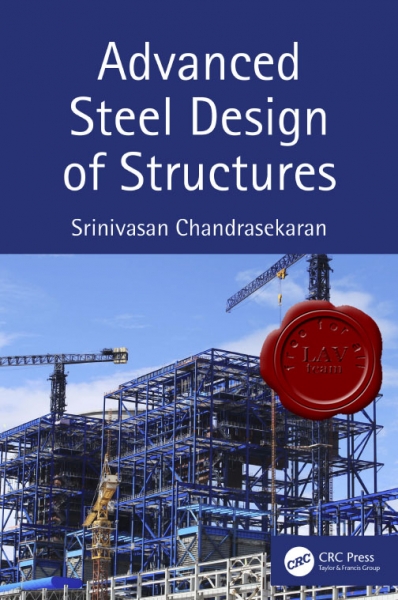
Advanced Steel Design of Structures examines the design principles of steel members under special loads and covers special geometric forms and conditions not typically presented in standard design books. It explains advanced concepts in a simple manner using numerous illustrative examples and MATLAB codes.
Features:
- Provides analysis of members under unsymmetrical bending
- Includes coverage of structures with special geometry and their use in offshore applications for ultra-deep water oil and gas exploration
- Presents numerical modeling and analysis of steel members under fire conditions, impact, and blast loads
- Includes MATLAB examples that will aid in the capacity building of civil engineering students approaching this complex subject
Written for a broad audience, the presentation of design concepts of steel members will be suitable for upper-level undergraduate students. The advanced design theories for offshore structures under special loads will be an attractive feature for post-graduate students and researchers. Practicing engineers will also find the book useful, as it includes numerous solved examples and practical tutorials. |
| |
 Читать статью дальше (комментариев - 9)
Читать статью дальше (комментариев - 9)
| |
|
 |
 Автор: Williams Автор: Williams
 Дата: 18 ноября 2019 Дата: 18 ноября 2019
 Просмотров: 2 217 Просмотров: 2 217 |
| |
Mohammad Karamouz, Azadeh Ahmadi, Masih Akhbari - Groundwater Hydrology: Engineering, Planning, and Management
CRC Press, 2011
pdf, 662 pages, english
ISBN: 978-1-4398-9121-6
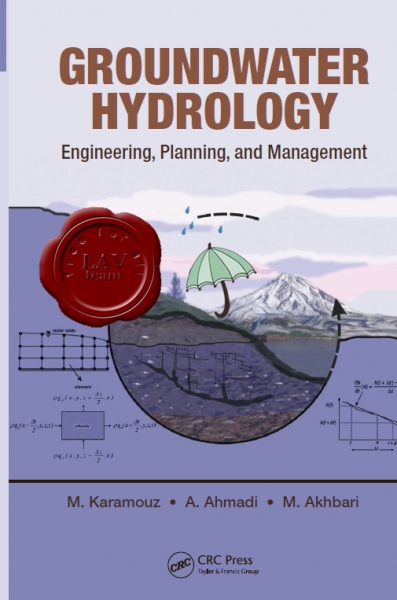
Increasing demand for water, higher standards of living, depletion of resources of acceptable quality, and excessive water pollution due to urban, agricultural, and industrial expansions have caused intense environmental, social, economic, and political predicaments. More frequent and severe floods and droughts have changed the ability and resiliency of water infrastructure systems to operate and provide services to the public. These concerns and issues have also changed the way we plan and manage our surface and groundwater resources. Groundwater Hydrology: Engineering, Planning, and Management presents a compilation of the state-of-the-art subjects and techniques in the education and practice of groundwater and describes them in a systematic and integrated fashion useful for undergraduate and graduate students and practitioners.
Повышение спроса на воду, повышение уровня жизни, истощение ресурсов приемлемого качества и чрезмерное загрязнение воды в результате расширения городов, сельского хозяйства и промышленности вызвали серьезные экологические, социальные, экономические и политические затруднения. Более частые и сильные наводнения и засухи изменили способность и отказоустойчивость систем водной инфраструктуры работать и предоставлять услуги населению. Эти проблемы и проблемы также изменили способ планирования и управления нашими ресурсами поверхностных и подземных вод. Гидрология подземных вод: проектирование, планирование и управление представляет собой сборник самых современных предметов и методик в образовании и практике подземных вод и описывает их в систематической и интегрированной форме, полезной для студентов и аспирантов и студентов-практиков. |
| |
 Читать статью дальше (комментариев - 12)
Читать статью дальше (комментариев - 12)
| |
|
 |
 Автор: Williams Автор: Williams
 Дата: 1 августа 2019 Дата: 1 августа 2019
 Просмотров: 3 566 Просмотров: 3 566 |
| |
Srinivasan Chandrasekaran - Advanced Structural Analysis with MATLAB
CRC Press, 2019
pdf, 521 pages, english
ISBN 978-0-367-02645-5
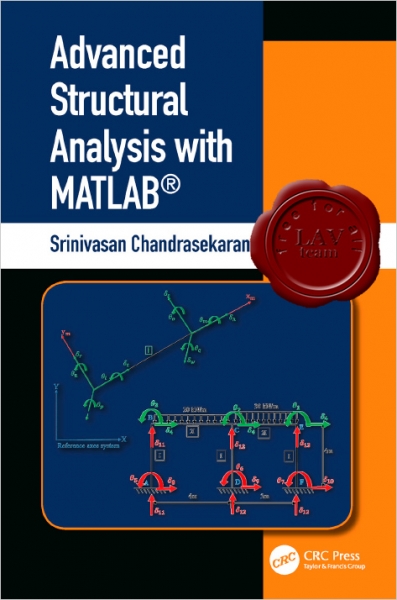
Building structures are unique in the field of engineering, as they pose challenges in the development and conceptualization of their design. As more innovative structural forms are envisioned, detailed analyses using computer tools are inevitable. This book enables readers to gain an overall understanding of computer-aided analysis of various types of structural forms using advanced tools such as MATLAB. Detailed descriptions of the fundamentals are explained in a "classroom" style, which will make the content more user-friendly and easier to understand. Basic concepts are emphasized through simple illustrative examples and exercises, and analysis methodologies and guidelines are explained through numerous example problems.
The analysis steps have been explained in a classroom style of teaching and the computer programs for MATLAB platform have been introduced in the form of examples. These computer programs cover matrix operation for a variety of structural forms and responses. The illustrative examples in the book enhance the understanding of the structural concepts stimulating interest in learning, creative thinking and design. |
| |
 Читать статью дальше (комментариев - 12)
Читать статью дальше (комментариев - 12)
| |
|
 |
| ПОИСК ПО САЙТУ |
 |
|
 |
| КАЛЕНДАРЬ | | |
 |
| « Октябрь 2025 » |
|---|
| Пн | Вт | Ср | Чт | Пт | Сб | Вс |
|---|
| | 1 | 2 | 3 | 4 | 5 | | 6 | 7 | 8 | 9 | 10 | 11 | 12 | | 13 | 14 | 15 | 16 | 17 | 18 | 19 | | 20 | 21 | 22 | 23 | 24 | 25 | 26 | | 27 | 28 | 29 | 30 | 31 | |
|
 | |
| |
|